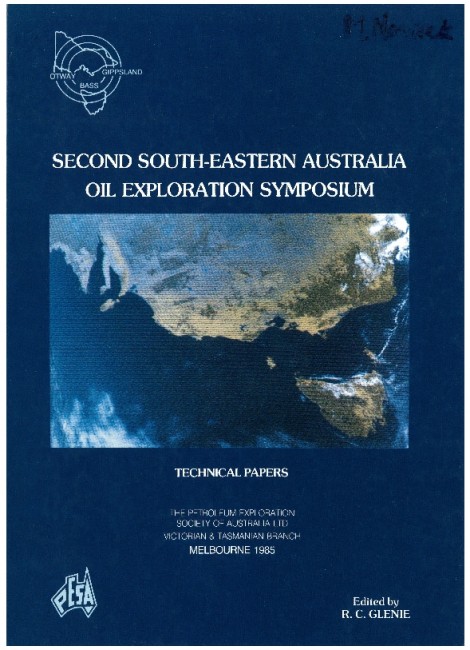Publication Name: Second South-Eastern Australia Oil Exploration Symposium - Technical Papers
Authors: G.F.J. Meszoly, J.M. Bodard and V.J. Wall
Date Published: December 1986
Number of Pages: 24
Reference Type: Book Section
Abstract:
The Upper Cretaceous to Upper Eocene Eastern View Group, in the Bass Basin of southeastern Australia, is an amalgamation of terrestrial quartz-rich siliciclastics comprising interbedded coal-mudstones, siltstones and sandstones that have undergone a complex post-depositional history. On the basis of process paragenesis and the intensity of product development, two diagenetic patterns are recognizable in the sandstones and are distinguished as Bass- and Pelicantypes.The Bass-type pattern primarily features carbonate authigenesis (a major cause of porosity occlusion) and
is typical of sandstones between the Eastern View Group surface (where sand-shale ratios are highest) and about 1950 metres subsea. In this zone, dolomite cement is associated with medium to coarse sandstones, whereas siderite cement typically develops in finer-grained arenites with carbonaceous laminae.
Pelican-type diagenesis is typical in sandstones below 2000 metres, and partially overprints Bass-type modifications. Shallow Pelican-type adjustments include the widespread dissolution of carbonate cement (the major mechanism of porosity preservation/ development) and feldspar and lithic grains. Subsequent porosity occlusion is related to compaction after carbonate dissolution, quartz overgrowth cementation and kaolinite precipitation/alteration. Deeper Pelican-type sandstones exhibit more intense quartz overgrowth cementation, local quartz solution/ reprecipitation and more sporadic authigenic illite than kaolinite.
Log-derived porosity-depth profiles of Eastern View Group sandstones show marked variation (range 0-36%) in porosity, which is typically higher in the upper parts and declines overall at about 5. 7 porosity units (p.u.)/1000 metres. A horizon between 1850 and 2050 metres exhibits the greatest porosity variation. Overlying and underlying this horizon are zones where significant departure from the overall porosity-depth relation is evident, attributable respectively to Basstype (porosity occlusion) and early Pelican-type (porosity enhancement) processes. Below this section, porosity declines more or less systematically, owing to more advanced diagenesis.
Stable carbon isotope data for carbonate cements (average -8.6 per mil) indicate organic sources, precluding
fluid communication between overlying marine carbonate reservoirs and the Eastern View Group during Bass-type diagenesis. Significant amounts of cement suggest mudrock- sourced compactional fluids and require high fluid throughput/mass transfer on a regional scale during comparatively early stages of burial. Later, widespread carbonate cement (and feldspar and lithic grain) dissolution, together with quartz and kaolinite development (which also require high fluid throughput), indicates a shift to more acidic pore fluids attending early Pelican-type
processes. Diagenetic characteristics of deeper, more advanced Pelican-type adjustments relate to reduced
fluid flux at higher temperatures.
The nature and distribution of porosity in the Eastern View Group suggests that potential reservoir quality is greatest between 1900 and 2700 metres subsea, over the extent of the basin. Advanced diagenesis results in increasingly poorer reservoir characteristics below this interval, except for sporadic 'sweetspots' due probably to overpressuring. Considering source-rock maturation levels and diagenetic trends together, shallower intra-Eastern View Group targets may offer greater economic potential than deeper Cretaceous-Paleocene plays, providing suitable traps are present.


